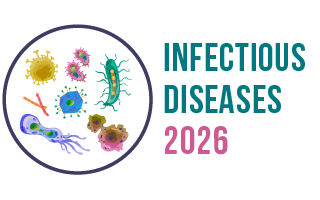4th International Conference on
Infectious Diseases
September 09-10, 2026 | Barcelona, Spain

Barcelona, Spain
Infectious Diseases 2026

Melese Alemnew Ayal
Bahir Dar Health Science College, Ethiopia
Abstract:
Biography:
Melese Alemnew Ayal had completed his master's degree in clinical pharmacy at the age of 26 from Addis Ababa University. He is the lecturer of Bahir Dar Health Science College; He have been in academia for more than 5 years. He published more than four papers in renowned journals, and his research focuses on infectious disease.
